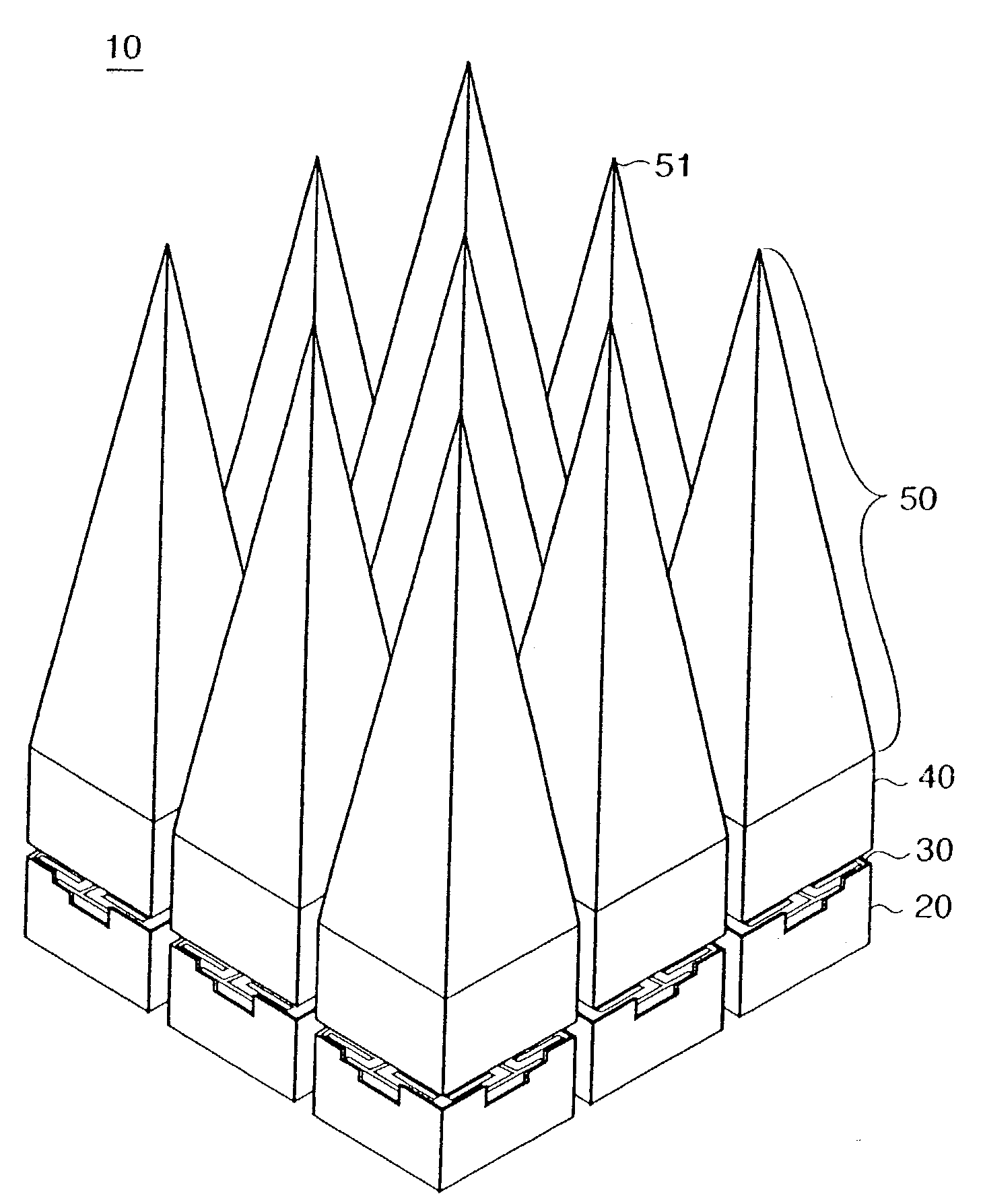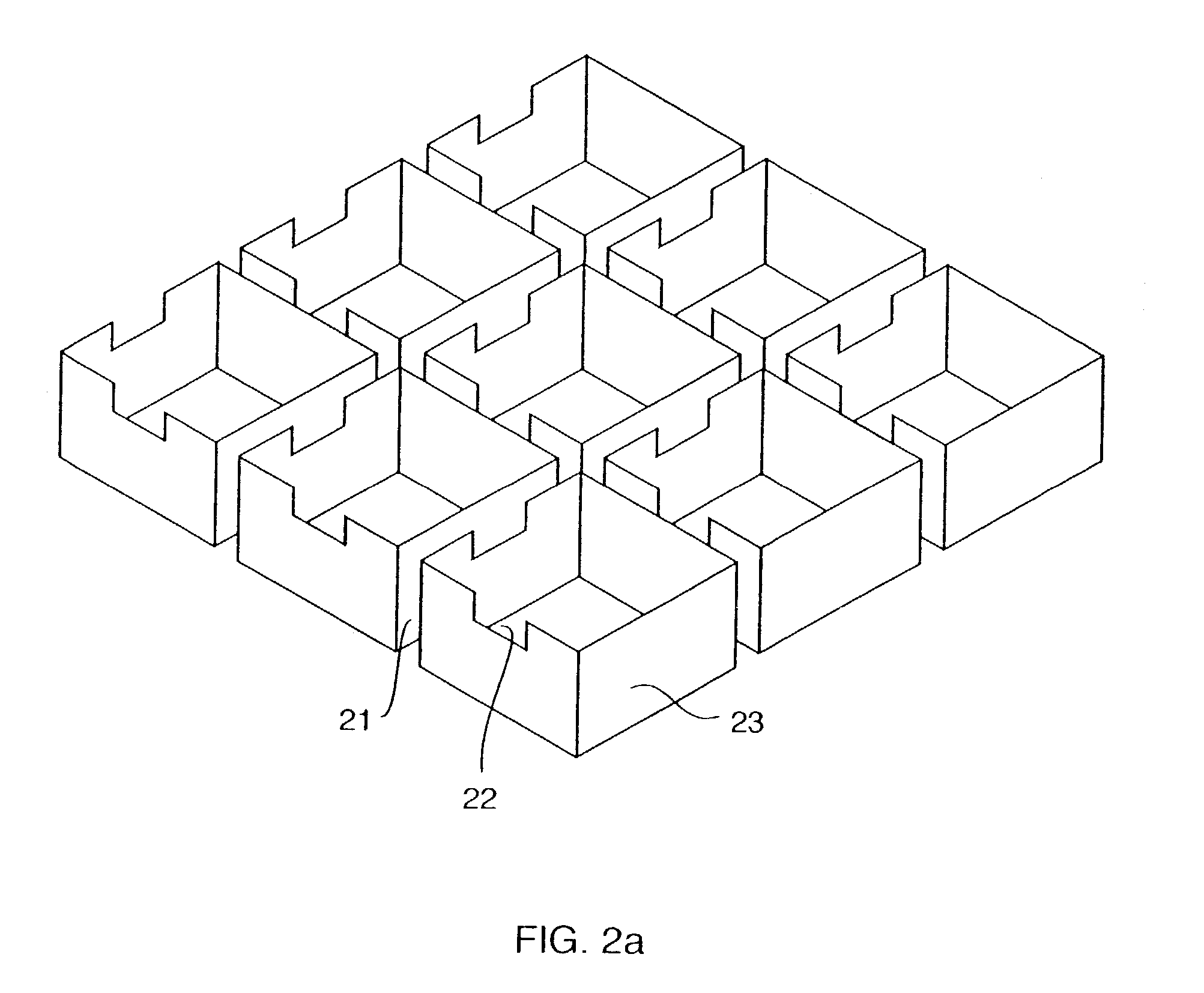Wideband antenna array
a wideband antenna and array technology, applied in the direction of slot antennas, antennas, basic electric elements, etc., can solve the problems of inherently narrowband arrays of patch antennas, inability to make small elements small enough to avoid grating lobes, and low-cost fabrication methods
- Summary
- Abstract
- Description
- Claims
- Application Information
AI Technical Summary
Benefits of technology
Problems solved by technology
Method used
Image
Examples
Embodiment Construction
[0025]FIG. 1 is a schematic of a 3×3 array of the co-planar waveguide (CPW) to freespace transition structure 10. The basic array element is a simple CPW fed parallel plate waveguide structure with a gradual, tapered transition to freespace. The structure 10 can be broken down into four different sections: an optional lower parallel plate waveguide section 20; a circuit board layer that contains the CPW probe and active electronics 30; an upper parallel plate waveguide section 40; and a substrate to freespace transition 50. FIGS. 2 through 5 detail each of the three lower sections.
[0026]The optional portion 20 of the structure 10 is shown in FIG. 2a. The optional portion 20 defines a series of crisscrossed parallel plate waveguides 21 formed by walls 23 defining box-shaped structures. The box-shaped structure can take the shape of a square or a rectangle. At the top of one wall for each of these parallel plate waveguides 21 is a rectangular aperture or notch 22 to accommodate a CPW ...
PUM
 Login to View More
Login to View More Abstract
Description
Claims
Application Information
 Login to View More
Login to View More - R&D
- Intellectual Property
- Life Sciences
- Materials
- Tech Scout
- Unparalleled Data Quality
- Higher Quality Content
- 60% Fewer Hallucinations
Browse by: Latest US Patents, China's latest patents, Technical Efficacy Thesaurus, Application Domain, Technology Topic, Popular Technical Reports.
© 2025 PatSnap. All rights reserved.Legal|Privacy policy|Modern Slavery Act Transparency Statement|Sitemap|About US| Contact US: help@patsnap.com



